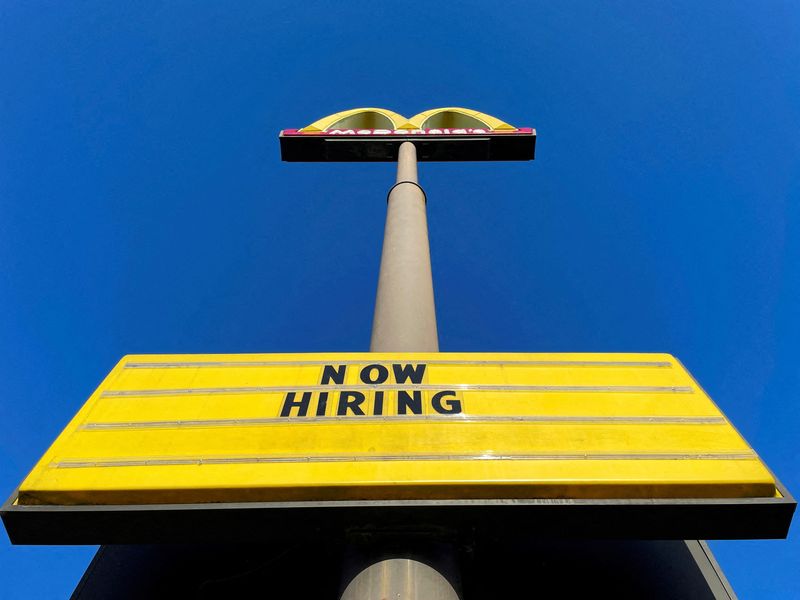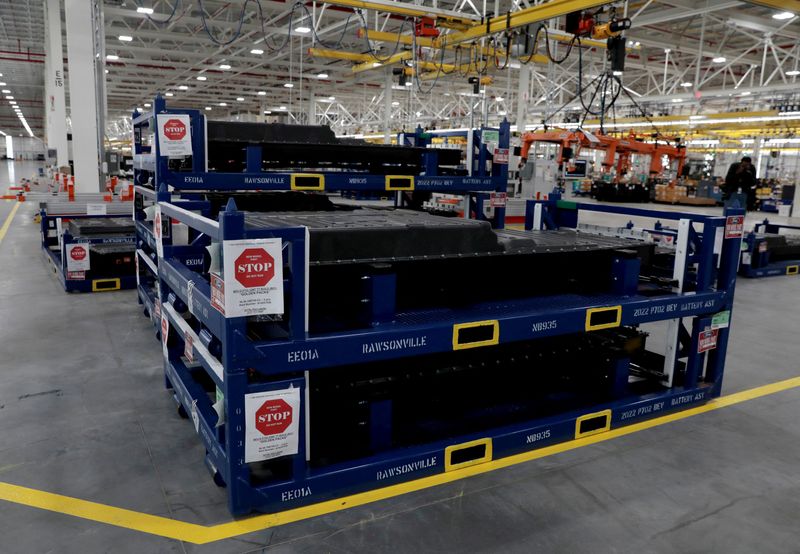(Reuters) - U.S. producer prices unexpectedly fell in July amid a drop in the cost for energy products and underlying producer inflation appears to be on a downward trend, while jobless claims rose for a second straight week in a labor market that remains tight.
The producer price index for final demand declined 0.5% last month, the first negative monthly reading since April 2020, the Labor Department said on Thursday. The PPI climbed 1.0% in June. In the 12 months through July, it increased 9.8% after advancing 11.3% in June.
Economists polled by Reuters had forecast the PPI would rise 0.2% in July and increase 10.4% on a year-on-year basis.
There was a drop of 1.8% in goods prices after a gain of 2.3% in June. A 16.7% fall in gasoline prices accounted for 80% of that decline. The prices of diesel fuel, liquefied petroleum gas and residential natural gas also fell sharply.
However, food prices gained 1.0% after declining 0.2% in the prior month, while the cost of services edged up 0.1% after advancing 0.3% in June.
GRAPHIC: PPI (https://graphics.reuters.com/USA-STOCKS/znpnerxydvl/ppi.png)
The government on Wednesday reported consumer prices were unchanged in July, helped by a drop in gasoline prices after a surge earlier this year, but underlying price pressures nevertheless remained high.
Excluding the volatile food, energy and trade services components, producer prices rose 0.2% in July. The so-called core PPI increased 0.3% in June. In the 12 months through July, the core PPI advanced 5.8% after rising 6.4% in June.
The Federal Reserve is mulling whether to raise its benchmark overnight lending rate by another 50 or 75 basis points at its next policy meeting on Sept. 20-21 in its bid to tame inflation running at more than three times its 2% target.
The U.S. central bank's rate-setting Federal Open Market Committee (FOMC) has raised its policy rate by 225 basis points since March as it battles to cool demand without sparking a sharp rise in layoffs.
"A potential peak in annual inflation measures is a welcome sign for consumers, businesses, and the FOMC, but historically elevated price dynamics churning in the economy will likely persist through the end of the year," said Mahir Rasheed, U.S. economist at Oxford Economics.
Yields on 2-year Treasury notes, the U.S. government bond most sensitive to Fed policy expectations, edged lower, and CME Group's (NASDAQ:CME) FedWatch tool showed a modestly higher likelihood that the central bank will raise its policy rate by 50 basis points next month.
U.S. stocks were trading higher and the dollar was weaker against a basket of currencies.
GRAPHIC: U.S. Inflation: Past its peak? (https://graphics.reuters.com/USA-ECONOMY/INFLATION/zdvxozxmlpx/chart.png)
LABOR DEMAND 'QUITE STRONG'
The number of Americans filing new claims for unemployment benefits rose for the second straight week, the Labor Department also reported on Thursday, indicating further softening in the labor market.
Initial claims for state unemployment benefits rose 14,000 to a seasonally adjusted 262,000 for the week ended Aug. 6. Economists polled by Reuters had forecast 263,000 applications for the latest week.
That's still below the 270,000-300,000 range that economists say would signal a material slowdown in the labor market.
"Demand for labor remains quite strong. The relative stability of continuing claims ... suggests that workers who are let go are still having a relatively easy time finding a new job," Jefferies economists wrote after the data was released.
The number of people receiving benefits after an initial week of aid increased 8,000 to 1.428 million during the week ending July 30. The so-called continuing claims are a proxy for hiring.
GRAPHIC: Jobless claims (https://graphics.reuters.com/USA-STOCKS/egvbkdorqpq/joblessclaims.png)

The U.S. economy unexpectedly contracted in the second quarter, with consumer spending growing at its slowest pace in two years and business spending declining. The second straight quarterly decline in gross domestic product largely reflected a more moderate pace of inventory accumulation by businesses as job gains overall have stayed strong.
The economy created an unexpectedly robust 528,000 jobs in July, the unemployment rate fell back to its pre-pandemic low, and wage gains surprised to the upside, the Labor Department announced last Friday in a monthly employment report that will make it harder for the Fed to bring the economy into balance soon.
